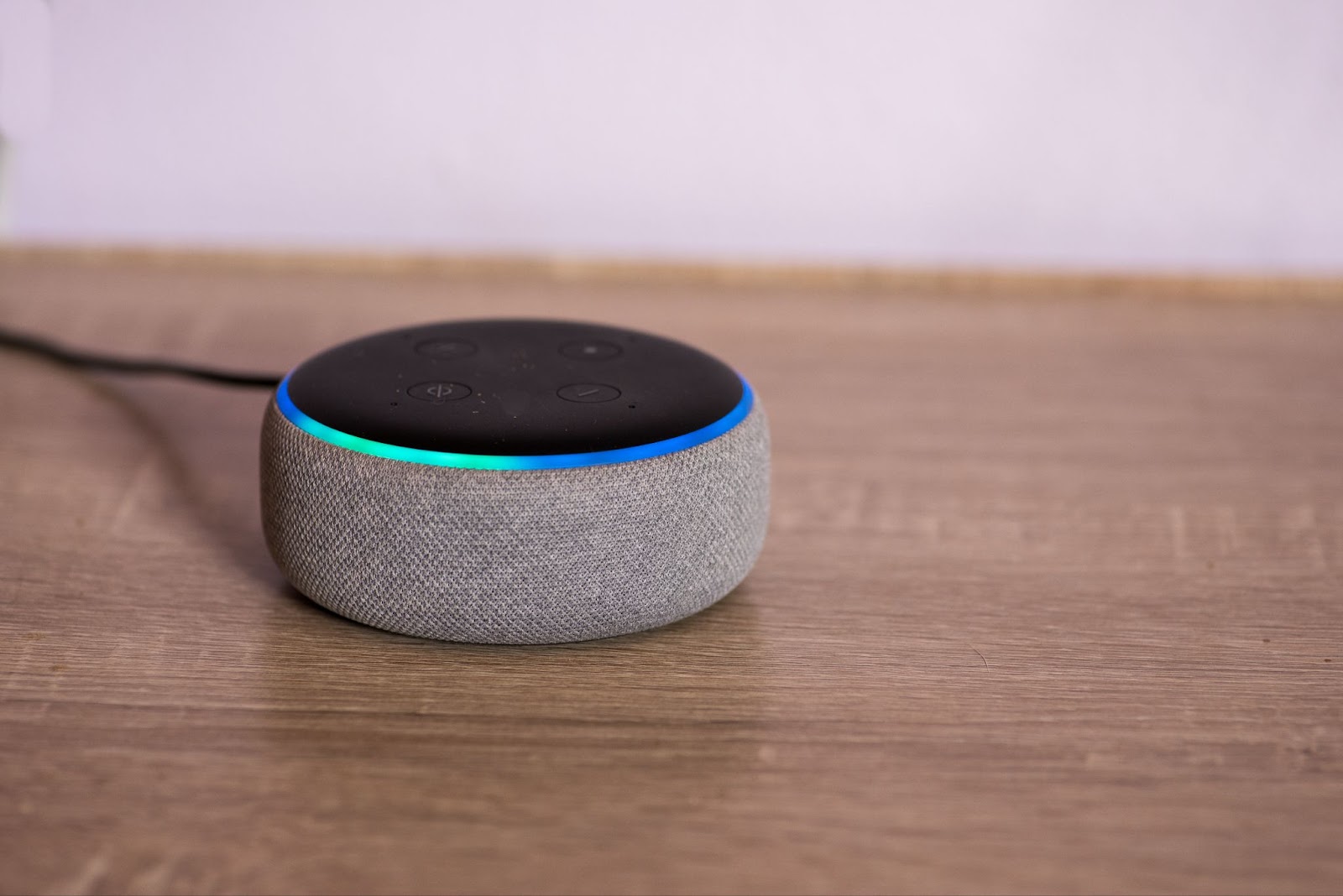Content Jump
- What Is A Smart Switch?
- Components of a Smart Switch
- Types of Smart Switches
- How Do Smart Lights Work
- Key Benefits of Using a Smart Switch
- How to Choose the Right Smart Switch for Your Home
- Step-by-Step Guide: How to Install a Smart Switch
- How to Use a Smart Switch: Practical Applications
- Troubleshooting Common Smart Switch Issues
- Top Smart Switch Recommendations for 2024
- Future of Smart Switches in 2024 and Beyond
- Build Your Dream Smart Home with AT Smart Home!
- Frequently Asked Questions (FAQ) About Smart Switch In Singapore
What Is A Smart Switch?

A smart switch is an advanced version of the traditional light switch that offers wireless control over lighting, fans, or other connected devices. Unlike traditional switches that only turn devices on or off manually, smart switches are equipped with digital connectivity and can be controlled via smartphones, voice assistants, or through preset schedules.
Components of a Smart Switch
Smart switches operate by connecting to your home’s Wi-Fi or Zigbee network, allowing you to manage lights and appliances using a smartphone app, such as Google Home or Amazon Alexa, or voice commands. In Singapore, the installation of smart switches is similar to that of conventional switches, but with added features that bring automation to everyday life.

1. Smart Circuitry:
Embedded technology allows it to communicate with your smartphone or home automation hub.
2. Connectivity:
Smart switches usually connect via Wi-Fi, Zigbee, or Z-Wave, allowing for seamless wireless control.
3. User Controls:
These are typically controlled through a dedicated app or integrated with virtual assistants like Amazon Alexa, Google Assistant, or Apple HomeKit.
Types of Smart Switches

1. Wi-Fi Smart Switches
Directly connect to your home Wi-Fi network.
2. Zigbee/Z-Wave Smart Switches
Require a hub to communicate but offer better energy efficiency.
3. Touch Switches
Sleek, touch-sensitive panels for a modern look.
Just like our Mowe 4″ Smart Touch Panel (Zigbee). Learn more About It Here.
4. Rocker and Push Button Switches
Offer both manual and digital control for a more traditional feel.
How Do Smart Lights Work
Smart switches are wired into your home’s electrical system like a traditional switch. However, they add the ability to control connected devices via apps or voice commands. Once installed, they integrate into your home automation system, allowing you to control lighting and appliances remotely.
Do you want to know about how Smart Lights work? Click here to learn more about it.
Key Benefits of Using a Smart Switch
Smart switches are wired into your home’s electrical system like a traditional switch. However, they add the ability to control connected devices via apps or voice commands. Once installed, they integrate into your home automation system, allowing you to control lighting and appliances remotely.

1. Convenience
Imagine turning off all your home’s lights with a single voice command or adjusting the brightness from your phone without getting up. Smart switches make daily tasks more convenient and offer unprecedented control over your home environment.
2. Energy Efficiency
Smart switches allow you to monitor and control energy consumption. You can schedule devices to turn off automatically when not in use, helping you save on electricity bills.
3. Integration with Smart Home Systems
Smart switches work seamlessly with other smart home devices, such as security systems and smart speakers, allowing you to create integrated routines. For example, you can sync your lighting to turn on automatically when you unlock your smart door lock.
4. Security and Safety
Automate lights to turn on and off when you’re away, giving the illusion that someone is home. Some smart switches can also be connected to motion sensors or security systems to enhance safety.
5. Customization and Automation
With smart switches, you can create custom scenes and routines. For instance, program the lights to dim when it’s time for a movie or turn off automatically when you leave for work.
How to Pick the Best Smart Switch for Your Home

1. Compatibility with Existing Wiring
Ensure your wiring is compatible with the smart switch you’re considering. Some switches require a neutral wire, which is not always available in older homes. Confirm whether your system is 2-wire or 3-wire.
2. Home Ecosystem Compatibility
Not all smart switches work with every smart home system. Make sure the switch you choose integrates with your preferred system—whether that’s Wi-Fi, Zigbee, or Z-Wave—and is compatible with Alexa, Google Home, or HomeKit.
3. Device Load Capacity
Ensure the smart switch can handle the electrical load of the devices you plan to control. Some switches are better suited for lights, while others can manage appliances like ceiling fans or smart blinds.
4. Design Preferences
Smart switches come in various designs, from touch-sensitive panels to more traditional rocker switches. Consider the aesthetics and functionality that suit your home.
5. Special Features
Look for features like dimmer control, multi-way operation (for switches controlling lights from multiple locations), or built-in motion sensors.
Step-by-Step Guide: How to Install a Smart Switch

1. Pre-Installation Checklist
- Turn off power: Always switch off power from the circuit breaker before installing.
- Gather tools: You’ll need a screwdriver, voltage tester, wire stripper, and the smart switch.
2. Wiring the Smart Switch
- Remove the old switch: Unscrew the existing switch and gently pull it out.
- Connect the smart switch: Follow the wiring diagram provided with your smart switch to connect the wires.
- Mount the switch: Attach the new switch to the wall and secure the faceplate.
3. Connecting to the Smart Home System
Once the switch is installed, connect it to your smart home system using the switch’s app or by linking it to your hub.
4. Final Checks
Test the switch using your mobile app and ensure that it responds to voice commands or scheduled routines.
Learn more about our Mowe Smart Switches & Smart Home Services.
Reach out to our Smart Home Specialist now & let us help you discover the best Smart Switch for your home.
How to Use a Smart Switch: Practical Applications

1. Lighting Control
Smart switches allow you to adjust indoor and outdoor lighting remotely. You can dim lights for movie nights, set timers, or control them while you’re away.
2. Fan Control
Automate ceiling fans to turn on or off based on temperature changes, time of day, or occupancy.
3. Appliance Automation
Control small appliances like coffee machines, heaters, or even window blinds through the smart switch for better efficiency.
4. Creating Scenes and Routines
With a smart switch, you can create customizable scenes. For example, program your “Goodnight” routine to turn off all lights and lower your thermostat automatically.
Troubleshooting Common Smart Switch Issues
1. Connectivity Problems
- Ensure that your switch has a strong Wi-Fi or Zigbee/Z-Wave signal.
- Move closer to the router or check for any interference.
2. Compatibility Issues
Some smart switches may not work with specific systems or devices. Ensure your smart switch is compatible with the devices you’re trying to control.
3. Power Issues
- If lights flicker or do not turn on, check the wiring or electrical load.
- Avoid overloading switches by ensuring they’re connected to compatible devices.
4. App Control Problems
Ensure that your app is updated, and check that the smart switch is properly linked to your network.
Top Smart Switch Recommendations for 2024
Best Smart Switch Overall – Mowe 4″ Smart Touch Panel (Zigbee)

Elevate your smart home with the Mowe 4″ Smart Touch Panel (Zigbee). This sleek panel integrates seamlessly with your devices, allowing easy control of lighting, fan settings, and home security from one central hub. Its 4-inch LCD screen combines functionality with modern style, making it the perfect smart home companion.
Shop for Mowe 4″ Smart Touch Panel (Zigbee) Now!
Best Budget Smart Switch – Mowe Zigbee Scene Switch – Triple Rocker

Upgrade your home without breaking the bank! The Mowe Zigbee Scene Switch – Triple Rocker offers budget-friendly smart home control, letting you customize lighting and ambiance with ease. With remote access through the iAppliance app and voice control, convenience is just a touch away.
For added comfort, try the Zigbee Smart Water Heater Switch, available in stylish white, champagne gold, black, and grey. Enjoy effortless control of your water heater with smart automation, enhancing your home’s functionality and style at a great price.
Shop for Mowe Zigbee Scene Switch – Triple Rocker Now!
Future of Smart Switches in 2024 and Beyond

The future of smart switches is exciting. Expect more seamless integration with AI and the Internet of Things (IoT), allowing for predictive automation, energy-saving algorithms, and enhanced security features. Sustainability is also a key focus, with future smart switches designed to reduce energy consumption, helping to lower both utility bills and carbon footprints.
Build Your Dream Smart Home with AT Smart Home!
Today, Smart switches are transforming how we engage with our homes. From offering convenience and energy savings to boosting security, these devices are a must-have for anyone looking to automate their living space. In 2024, smart switches will continue to evolve, becoming smarter, more efficient, and easier to use. Whether you’re just starting your smart home journey or looking to upgrade your existing setup, now is the perfect time to explore the world of smart switches.
Ready to enjoy the smarter, more convenient life you deserve? Visit AT Smart Home at 61, 1 Ubi Rd 1, #01-26/27 Oxley Bizhub, Singapore 408727, Singapore 408733. You can also reach us by call or WhatsApp at 8779 3224 to kick-start your transformation!
Frequently Asked Questions (FAQ) About Smart Switch In Singapore
Can I install a smart switch myself?
Yes, most smart switches are DIY-friendly, but if you’re not comfortable with electrical work, consult an electrician.
Do I need a hub for a smart switch?
Some switches (like Zigbee or Z-Wave models) require a hub, while Wi-Fi switches connect directly to your network.
Smart Switch & Smart Plug, What’s the difference?
A smart switch controls the wiring in your walls, while a smart plug controls individual devices by plugging into an outlet.
Can smart switches control dimmable lights?
Yes, many smart switches offer dimming features for compatible dimmable lights.
Are smart switches secure from hacking?
When set up properly with strong network security, smart switches are safe to use. Always update firmware regularly and use strong passwords.
What is the difference between smart bulb and smart switch in Singapore?
A smart bulb controls individual lights and may offer color changes, while a smart switch controls the entire lighting circuit, making it more versatile for multiple lights.
What are the disadvantages of smart light switches?
They can be more expensive, require neutral wiring, and may need a hub or bridge for full functionality.
Do smart switches use a lot of electricity?
No, smart switches use very little electricity when idle, typically less than a traditional light switch.
How long do smart switches last?
Smart switches can last more than 5-10 years, depending on usage, brand, and environmental factors.
Why are smart light switches so expensive?
They include advanced features like app control, scheduling, and integration with smart home systems, increasing their cost.
Is it safe to use smart switch?
Yes, smart switches are safe when properly installed, and most are certified to meet safety standards.






